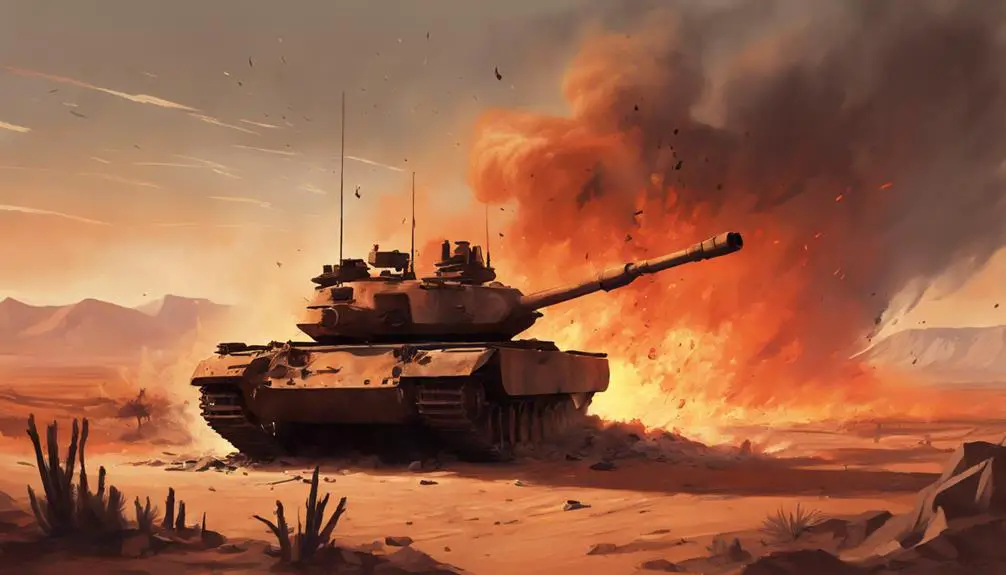You'll encounter a range of military slang for explosions, from artillery fire to high-order detonations, that are essential for effective communication in high-stress combat situations. You'll hear terms like 'high-order detonation' and 'brisance' to describe intense blasts, and 'IED' or 'VBIED' to identify specific types of improvised explosive devices. In the heat of battle, clear communication is key, and understanding these terms can mean the difference between life and death. As you explore the world of military slang for explosions, you'll discover the nuances of combat communication and gain a deeper understanding of the tactics and strategies that shape modern warfare.
Artillery Fire and Blast Effects
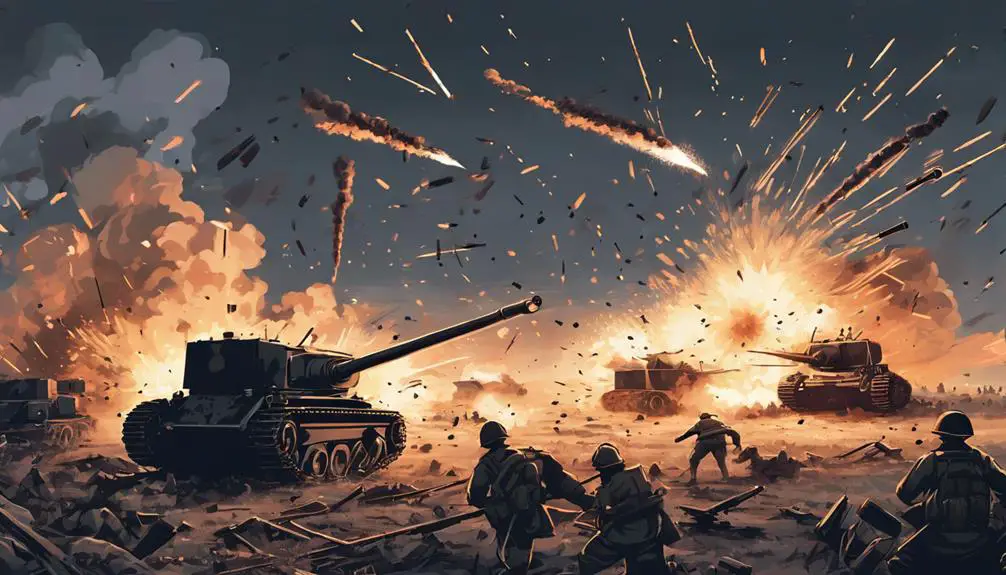
When you're on the receiving end of artillery fire, the blast effects can be devastating, causing widespread destruction and loss of life. The impact zone assessment is important in understanding the extent of the damage. This assessment involves evaluating the area affected by the blast, including the radius of destruction, crater size, and fragmentation pattern.
Blast wave analysis is another critical aspect of understanding artillery fire effects. The blast wave is a high-pressure shockwave that radiates outward from the point of detonation, causing damage to structures and injuring or killing personnel. By analyzing the blast wave, military personnel can determine the yield of the explosive, the distance from the blast, and the resulting damage. This information is essential in planning defensive strategies and mitigating the effects of artillery fire. In the heat of battle, every second counts, and accurate assessment of blast effects can mean the difference between life and death.
Explosive Ordnance Disposal Terms
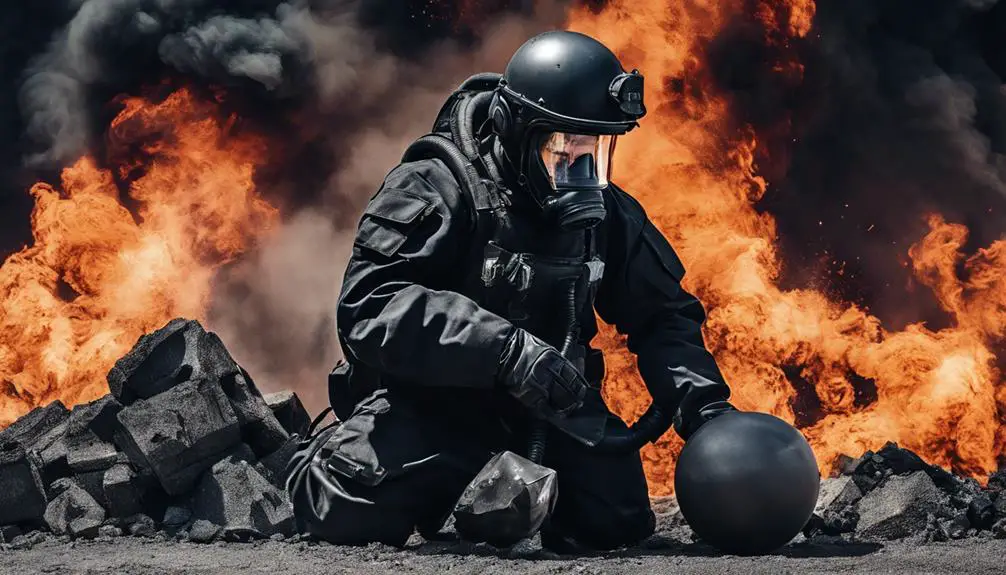
As you shift from evaluating blast effects to handling the explosive devices themselves, you'll need to familiarize yourself with the terminology used in explosive ordnance disposal. This specialized field requires precise communication to guarantee safe and effective operations. You'll encounter bomb squad protocols, which outline procedures for responding to explosive threats. These protocols dictate everything from initial assessment to disposal methods. Demolition techniques, such as controlled detonations or render-safe procedures, are also essential to master. Understanding the language used in explosive ordnance disposal is crucial to working efficiently and safely. Familiarize yourself with terms like 'IED' (improvised explosive device), 'UXO' (unexploded ordnance), and 'EOD' (explosive ordnance disposal). Knowing these terms will help you communicate effectively with your team and respond appropriately to explosive threats. By grasping these concepts, you'll be better equipped to handle the complexities of explosive ordnance disposal.
Battlefield Explosion Descriptions
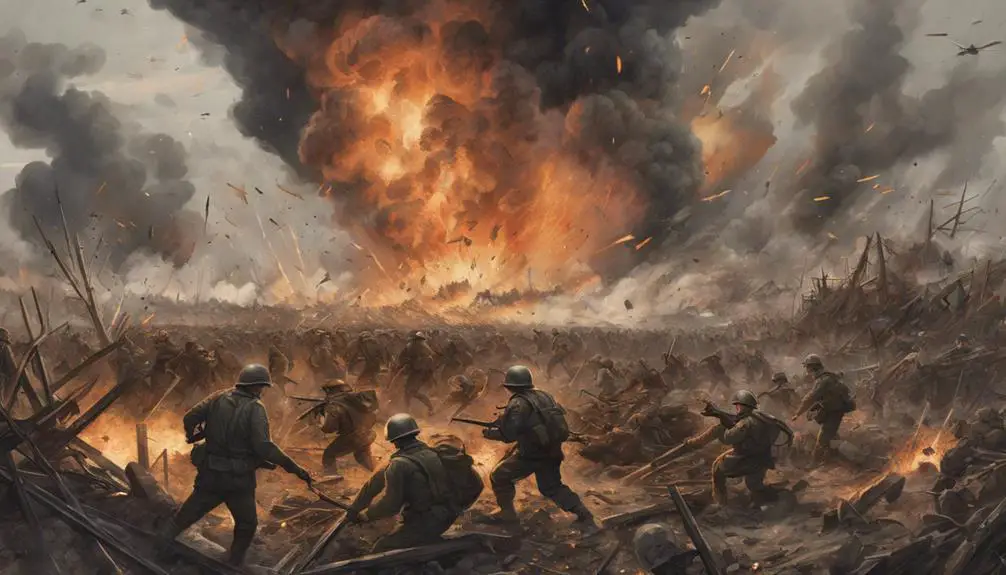
On the battlefield, you'll encounter various types of explosions, each with its own distinct characteristics and consequences. Understanding these differences is vital for effective communication and situational awareness.
When you're in the midst of combat, you may hear terms like 'blast wave' or 'shockwave.' These refer to the pressure waves generated by an explosion, which can cause damage to structures and harm personnel. Battlefield blast waves can be particularly destructive, as they can knock soldiers off their feet or even cause structural collapse.
Combat shockwave effects can be just as devastating. These can include everything from concussive injuries to destroyed equipment. You may also hear terms like 'overpressure' or 'underpressure,' which describe the extreme changes in air pressure caused by an explosion. Being familiar with these terms can help you better comprehend the aftermath of an explosion and respond accordingly. By recognizing the distinct characteristics of different explosions, you'll be better equipped to navigate the chaos of the battlefield.
High-Order Detonation Lingo
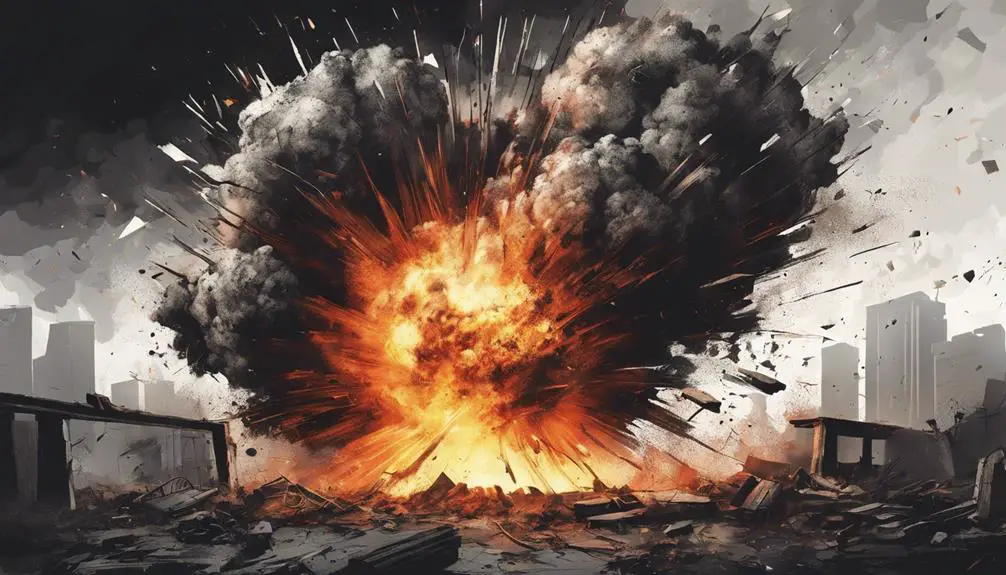
You'll frequently come across high-order detonation lingo on the battlefield, where terms like 'brisance' and 'overpressure' are used to describe the intense, shattering effects of a high-energy explosion. These terms are rooted in detonation physics, which studies the rapid release of energy during an explosion. In high-order detonations, the blast wave propagates at supersonic speeds, generating enormous pressure and temperature increases that can cause massive destruction.
Blast wave theory helps explain the behavior of these shockwaves, including how they interact with the surrounding environment. Military personnel use terms like 'brisance' to quantify the shattering effect of an explosion, while 'overpressure' refers to the increase in air pressure caused by the blast wave. Understanding these concepts is essential for military personnel, as it helps them assess the severity of an explosion and respond accordingly. By grasping high-order detonation lingo, you'll better comprehend the intense effects of high-energy explosions and the importance of detonation physics in military operations.
Military Jargon for IEDs

When facing improvised explosive devices (IEDs), military personnel rely on a distinct set of terms to quickly convey critical information and respond effectively. You'll often hear terms like 'IED emplacer' to describe the individual who plants the device, and 'IED triggerman' to refer to the person who detonates it. Understanding these terms is vital in IED detection methods, as it helps troops identify and neutralize threats more efficiently.
In the context of Improvised Explosive Device tactics, you'll come across terms like 'VBIED' (Vehicle-Borne IED) and 'PBIED' (Person-Borne IED). These acronyms help distinguish between different types of IEDs, enabling troops to adapt their response strategies accordingly. For instance, a VBIED might require a more extensive perimeter setup, while a PBIED might necessitate a more focused search of individuals.
Familiarizing yourself with this specialized vocabulary is essential in high-pressure situations, where clear communication can mean the difference between life and death. By understanding military jargon for IEDs, you'll be better equipped to respond to these threats and stay one step ahead of the enemy.
Pyrotechnic and Flame Terms
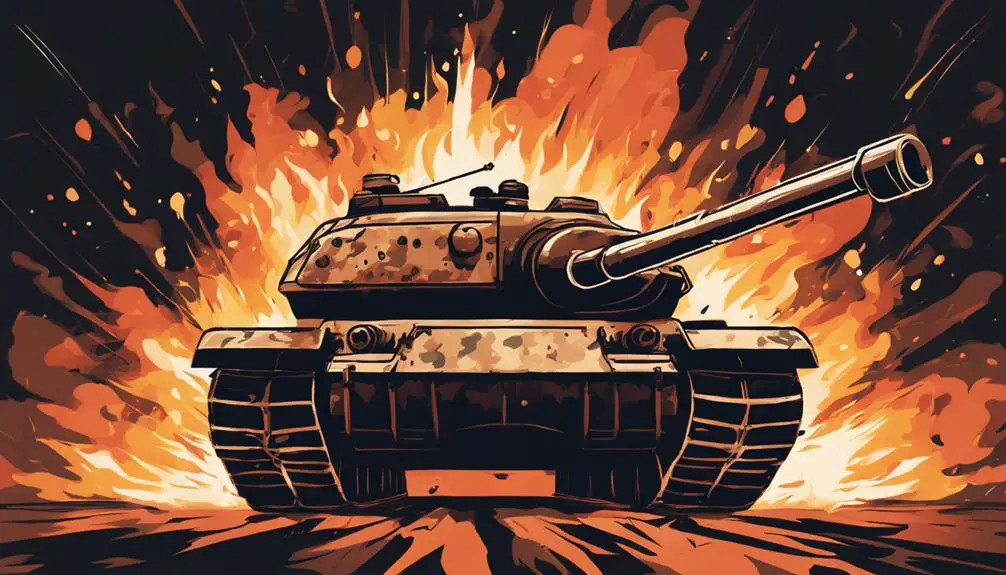
In the heat of battle, understanding pyrotechnic and flame terms becomes vital for military personnel to effectively communicate and respond to explosive threats. You'll encounter various pyrotechnic devices, such as flares, smoke grenades, and fireworks, which can be used for signaling, illumination, or smoke screens. Familiarity with these terms helps you distinguish between friendly and hostile fire.
For instance, you might receive a smoke signal, indicating a call for support or a warning of an impending attack. You might also use fireworks simulation to create a diversion or disrupt enemy communications. In addition, understanding pyrotechnic terms enables you to identify and respond to explosive hazards, such as incendiary devices or explosive ordnance. By grasping these terms, you'll improve your situational awareness and enhance your unit's combat effectiveness. Remember, clear communication is essential in high-stress situations, and pyrotechnic and flame terms are essential for effective coordination and response.
Radio Call Signs for Explosions
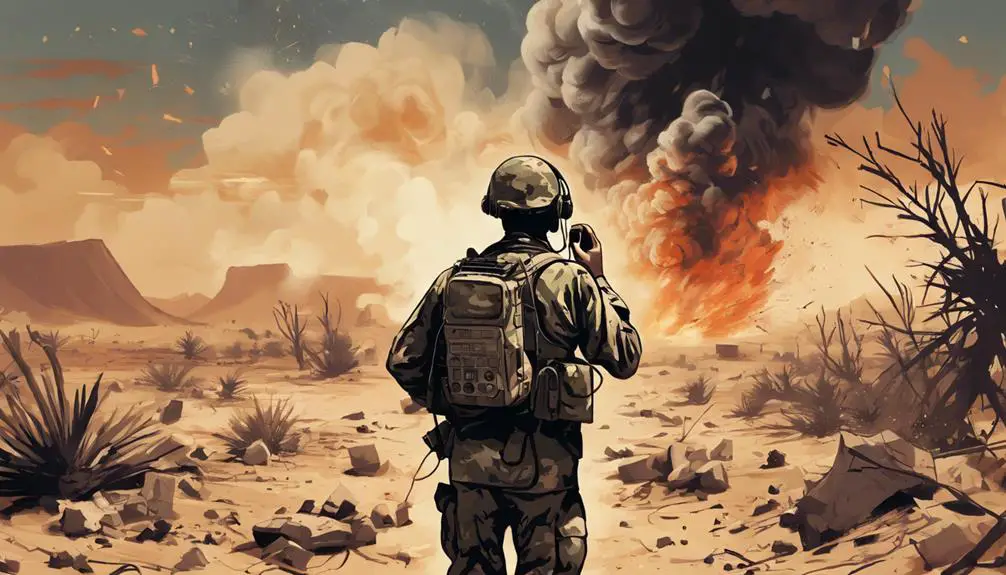
As you move beyond pyrotechnic and flame terms, understanding radio call signs for explosions becomes vital for clear communication during operations, allowing you to quickly report and respond to explosive events. When reporting explosions over the radio, using standardized radio protocol phrases guarantees accuracy and speed. You'll use phrases like 'Explosion, grid coordinate…' or 'Blast, vicinity…' to quickly convey important information.
To report the location of an explosion, you'll use the Phonetic alphabet to clearly communicate grid coordinates or other identifying features. This phonetic alphabet replaces letters with code words, reducing errors and miscommunication. For example, 'Bravo' replaces 'B' and 'Lima' replaces 'L'. This precise communication enables swift response and reaction to explosive events.
In high-pressure situations, clear and concise communication is vital. By using standardized radio protocol phrases and the Phonetic alphabet, you'll ensure accurate and efficient reporting of explosions, facilitating a swift response and minimizing confusion.
Frequently Asked Questions
Are Explosions Always Loud, or Can They Be Silent?
Like a whispered secret, explosions can be eerily quiet. You might assume they're always loud, but that's not the case. In reality, some explosions can be silent or nearly silent. This is because the energy released can be absorbed or dispersed in ways that don't produce a loud noise. For instance, underwater explosions can be detected through sonar detection, but may not produce audible sounds. Similarly, shockwave propagation can be contained, minimizing the noise.
Can Explosions Occur Naturally, or Are They Always Man-Made?
You're wondering if explosions always have a human touch or if nature can create them too. The answer is, yes, explosions can occur naturally. Geological upheaval and seismic activity can lead to explosive events, like volcanic eruptions or earthquakes. These natural explosions can be just as powerful as man-made ones, causing significant destruction. So, it's not always human intervention that sets off an explosion.
Do Explosions Always Produce Fire or Flames?
You're sitting on a powder keg, waiting for an answer. When it comes to explosions, do they always produce fire or flames? Not necessarily. Chemical reactions can generate intense heat, but not all explosions involve combustion. Blast waves can cause damage without a single flame in sight. In fact, some explosions, like those in space, don't produce fire at all. So, while fire can be a byproduct, it's not a guarantee.
Are Explosions Only Used in Combat, or for Other Purposes?
You might think explosions are only used in combat, but that's not the case. Explosions have various purposes beyond warfare. In explosive engineering, controlled blasts are used in construction, mining, and demolition techniques to clear land or bring down structures safely. You'll also find explosions in fireworks displays, special effects in movies, and even in scientific research to study high-pressure phenomena.
Can Explosions Be Contained or Directed, or Are They Always Uncontrolled?
Imagine standing at the edge of a raging storm, where chaos reigns supreme. But what if you could harness that fury, bending it to your will? When it comes to explosions, you might think they're always uncontrolled, but that's not entirely true. With the right strategies, you can mitigate their impact, directing the blast wave to minimize damage. It's all about mastering explosion mitigation strategies and blast wave manipulation – the art of taming the tempest.

